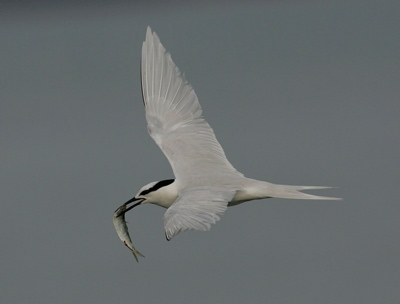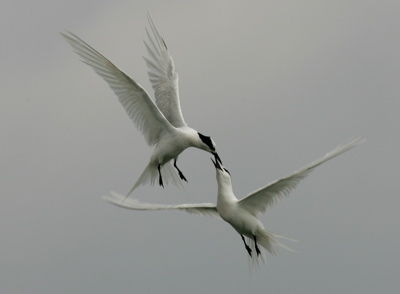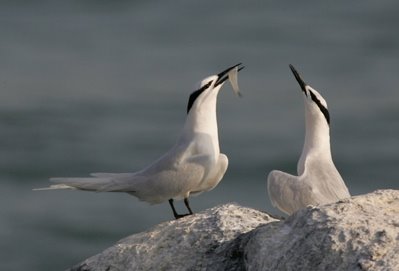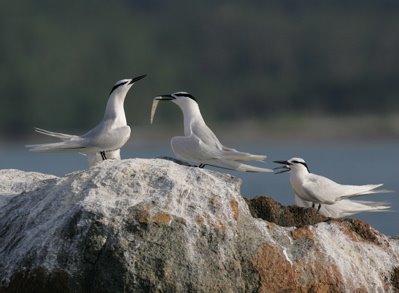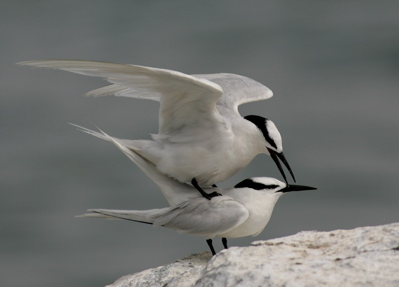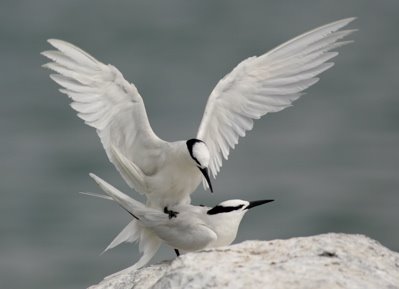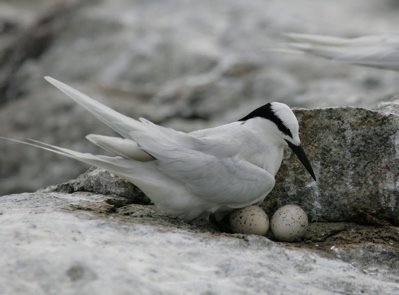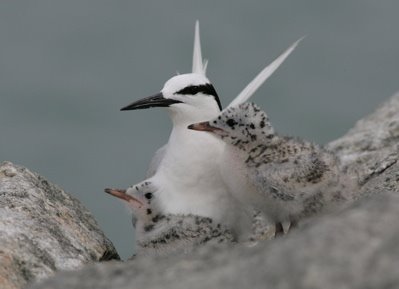The Black-naped Tern (Sterna sumatrana) is a medium-sized white bird that is easily recognised by the black band encircling the sides and back of the crown, ending just in front of the eye. Its streamlined body, long and narrow wings and forked tail adapt it well to life on the wing. It exhibits a powerful and graceful flight.
These terns are essentially offshore birds, feeding on fish that they catch from the coastal shallow waters by diving from a height (above). They also feed on crustaceans and insects. Insects are taken from vegetation or water surface. They may even hawk for insects in the air when the latter emerge in large numbers.
The birds nest on rocky islets, making use of shallow depressions as nests. Seldom do they line their nests with plant or other materials. Prior to copulation, there is the normal courtship ritual where the pair may indulge in elaborate aerial displays (above). The male usually feeds the female with fish, who may either swallow it immediately or keep it in her bill during the display (below).
During courtship feeding other males will always be around, trying to grab the fish (below two).
Once a pair has bonded this courtship feeding may intensify. The male will be working hard bringing back fish for his female the whole day. This behaviour is believed to help the female judge the quality of her mate. Should the male slack, she may dump him for another.
Copulation involves the male mounting the female, which may follow a short period of courtship dance (above two). Once cloacal contact is made the male dismounts. Mating may go on many times a day prior to egg laying.
Usually two eggs are laid on the bare rock (above two). Both birds help in incubation, one sitting in the nest while the other out foraging. The incubation period is 21-28 days and the chicks on hatching are semi-precocial. This means that their eyes are open and they are covered with downy feathers on hatching. Also, they can walk soon after but they still rely on the adults for food (below).
The chicks are well camouflaged in their grayish and white downs spotted with black (below).
Input by YC Wee and images by Chan Yoke Meng.


